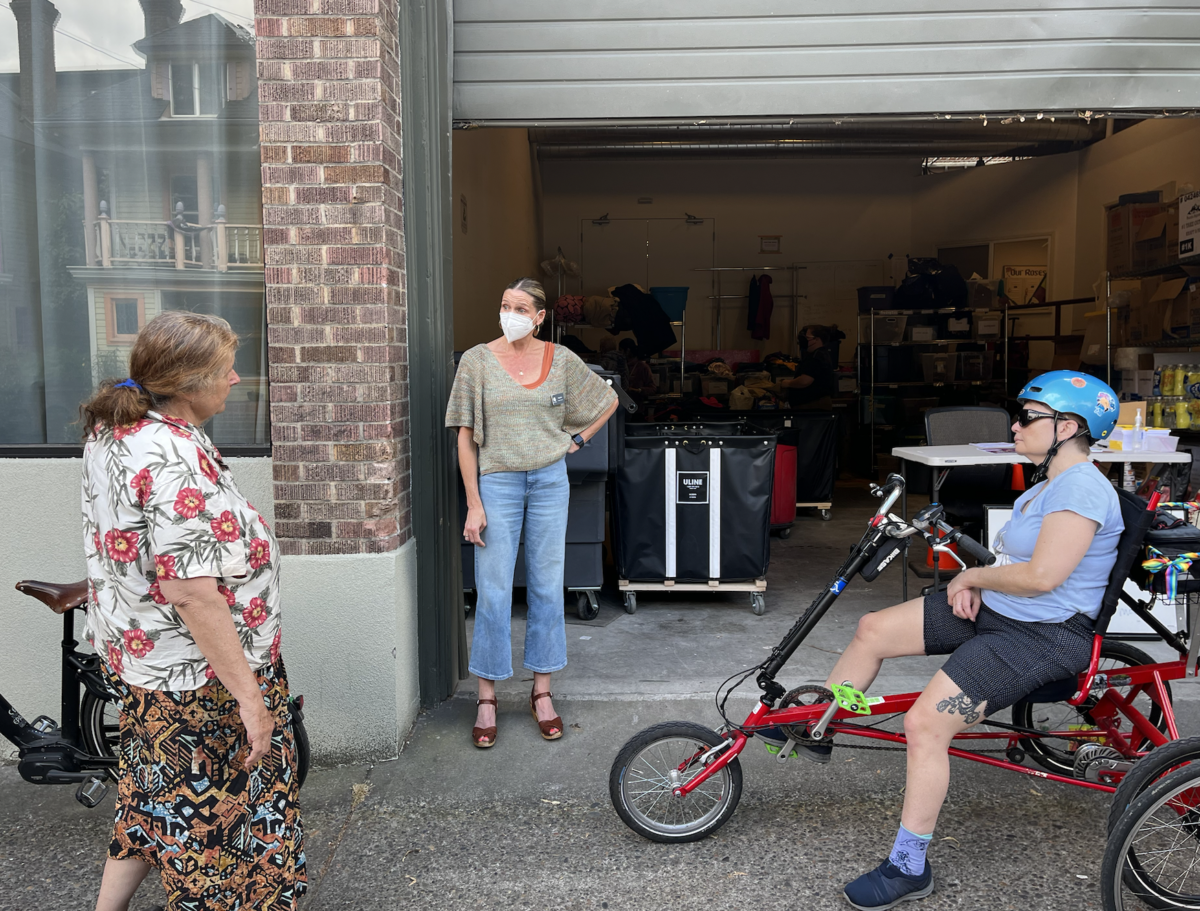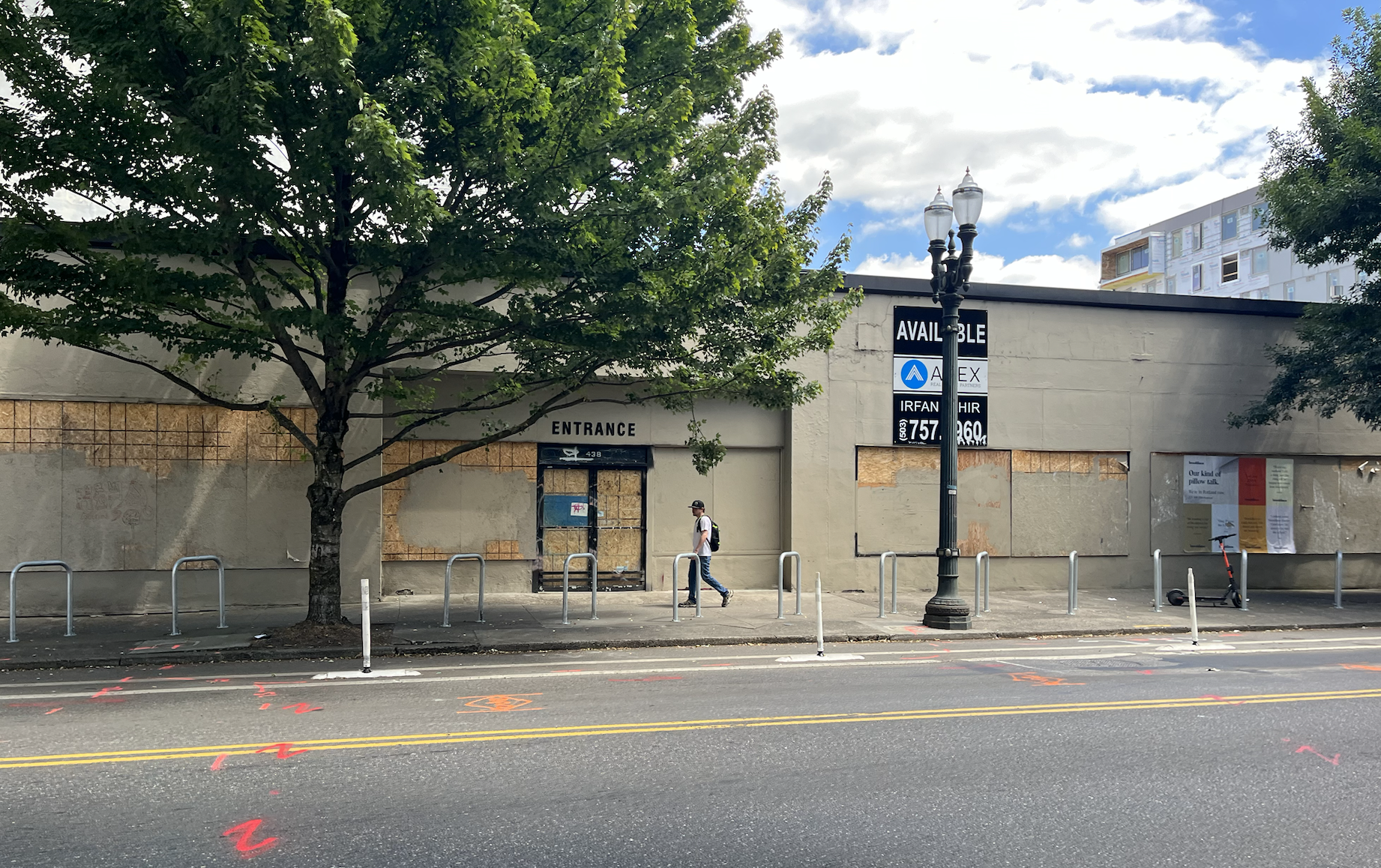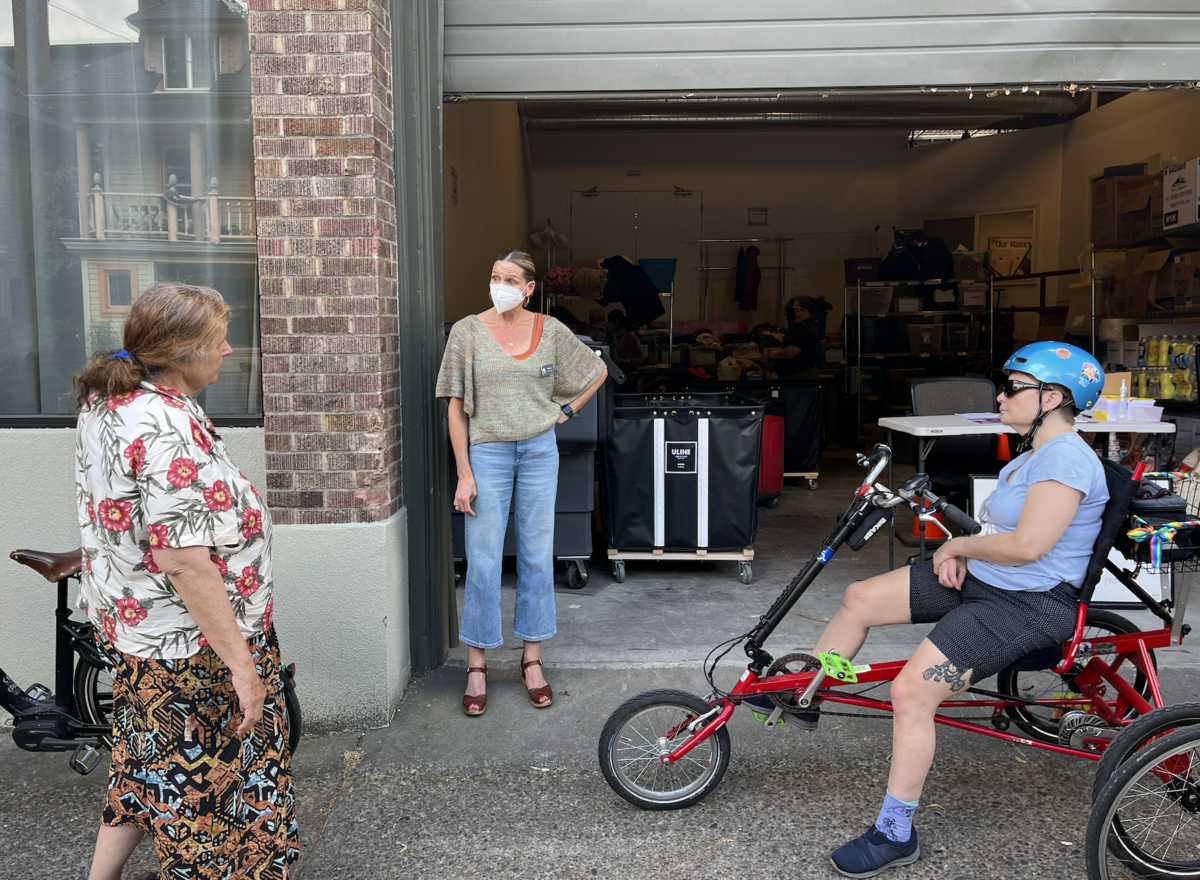
Most of the Bike Loud PDX Portland ‘policy rides’ Cathy Tuttle has led so far this year have focused specifically on bike or transportation policy. Last month, for instance, Tuttle recruited Portland Bureau of Transportation’s signals manager Peter Koonce to lead a tour of Central City traffic signals, and the month before, the Parking Reform Network’s Tony Jordan gave riders the lowdown on Portland parking policy.
This month, however, Tuttle went in a new direction and tackled a subject transportation activists aren’t always directly involved in: homelessness and social services. It’s not as cut and dry as a ride looking at bike signals, but Tuttle thought it was just as important to show bike advocates what’s going on in this sector of Portland life.
Tuttle told me she wanted to connect the themes of homelessness and access to social services with transportation advocacy or city planning generally because cities are made up of more than just inanimate physical infrastructure. The network of social services and people working together to help each other make up the fabric of downtown Portland just as much as bike lanes, the Streetcar and MAX rails do.
“People are part of the city,” Tuttle said.
Portland’s Old Town has been a favored place for people to set up camps because it’s a hub for resources that aren’t available in other parts of the city. This became especially pertinent during the pandemic, when many social service organizations around Portland had to restructure and couldn’t provide the same services as they used to. Over the last few years, unhoused people have formed communities in Old Town and become a part of the neighborhood. This has become a hot button issue for people across the ideological spectrum, with some people using the prevalence of tents downtown as a sign of Portland’s rapid decay – a thought process I don’t find conducive to progress and thoughtful city planning.
Bike Loud aims to make Portland accessible without a car, which means acknowledging there are many people in the city who don’t drive whose needs can be overlooked in favor of accommodating car drivers. This group of people includes many homeless people, who – like all of us – should be able to access things they need without traveling very far.


This is why it’s so painful for people when the city sweeps their camps and forces them to go elsewhere, cutting off access to services and a community they’ve grown familiar with.
Along with city-ordered encampment clean-ups, which have been revving up in Old Town in recent months, people living on the streets are subject to hostility from business and property owners. We rode past the unsanctioned bike racks erected on NW Broadway outside a building owned by Schnitzer Properties, which homeless advocates saw as hostile architecture intended to prevent people from setting up tents on the sidewalk (there isn’t demand for bike parking on that block). In contrast, PBOT’s new car-free plaza in Old Town, which we took a quick look at, provides a welcoming space for the public to enjoy. This is an example of how infrastructure can determine who is allowed to exist in a city – how public ‘public space’ really is.
At Rose Haven, an organization in the Northwest District a bit outside Old Town that serves women and children as a community center and day shelter, people who need some help getting around the city can get financial assistance for TriMet passes. They have a designated transportation assistance budget, which just shows how important transportation access is.
We spoke to people from Stone Soup and Sisters of the Road, both organizations that give people a chance to work in food service, which helps people with career training and allows for community connection. We also rode past service providers like Transition Projects, Blanchett House and a day storage facility, as well as P:ear, a program that offers homeless youth the very cool opportunity to learn professional skills including bike repair. Looking at all the programs that exist within about a 1.5 mile radius, I thought it was meaningful that all of them serve to fill some gap. People are in communication with one another, working together to ensure they’re able to serve the community the best they can.
“One organization can’t do it all,” said Lana Silsbe, the kitchen manager at Sisters of the Road. “We rely on everyone; we work together.”



